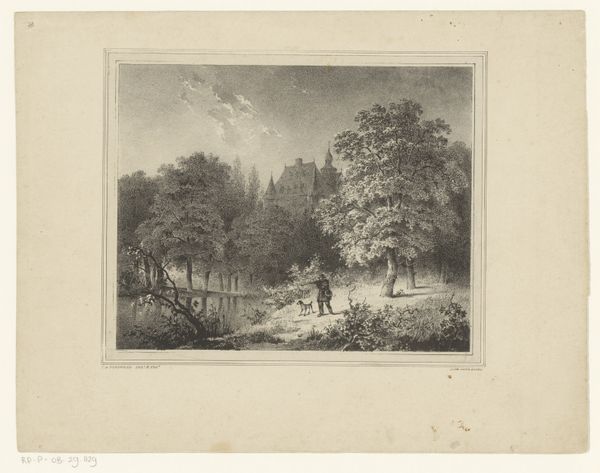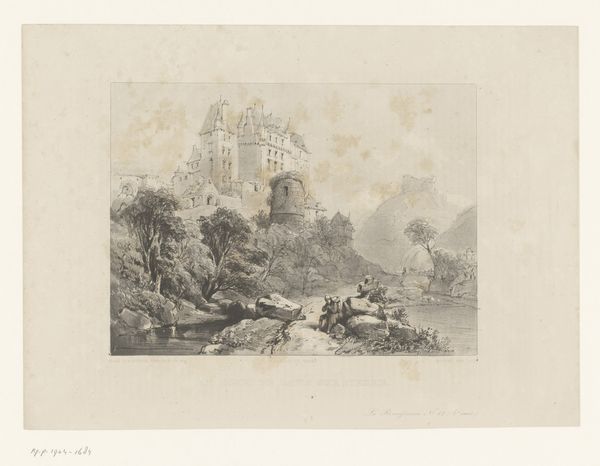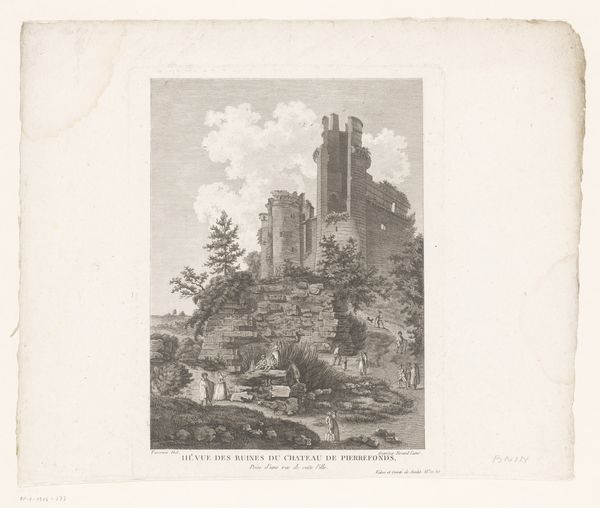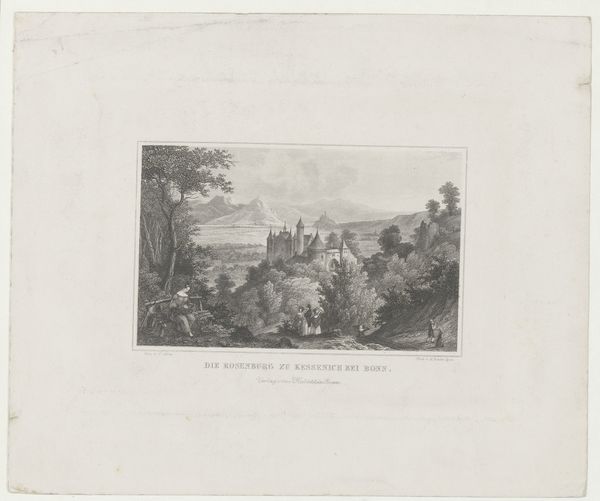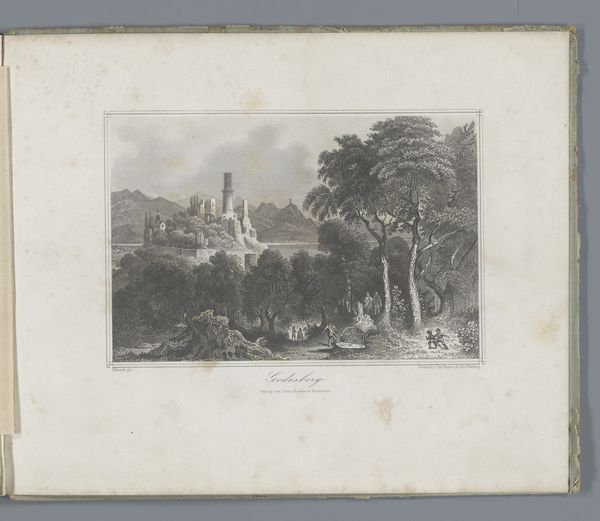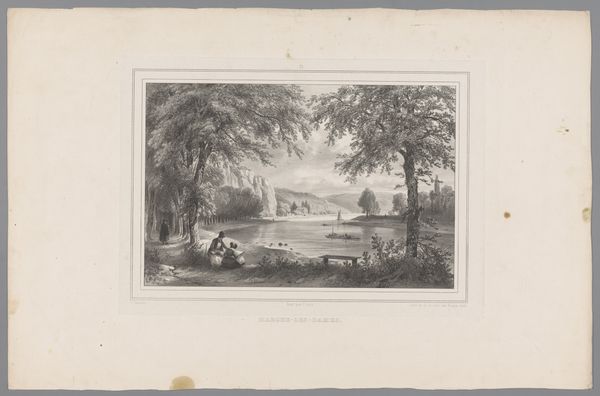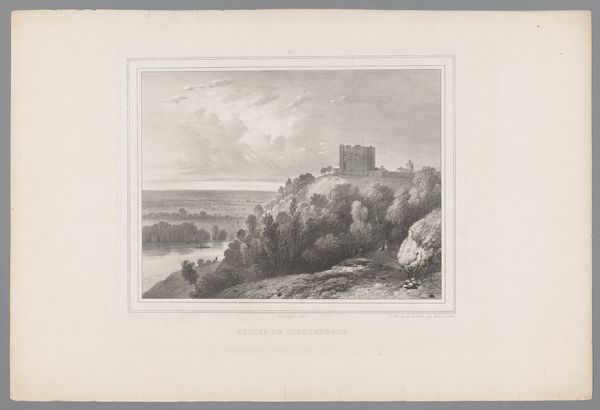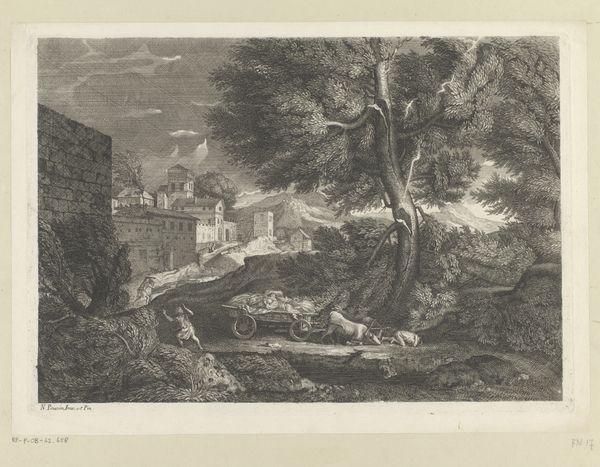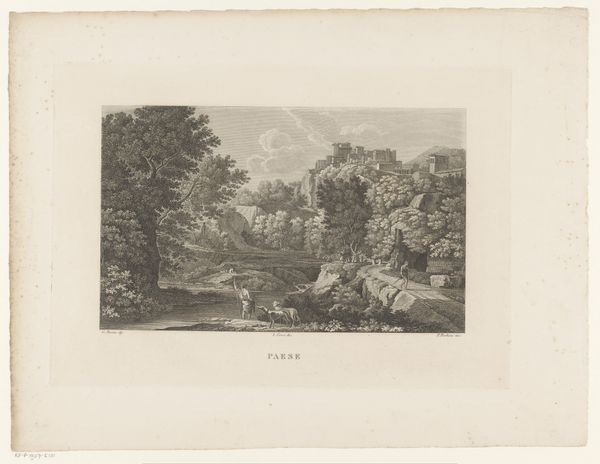
drawing, paper, engraving
#
drawing
#
water colours
#
landscape
#
paper
#
romanticism
#
engraving
Dimensions: height 360 mm, width 548 mm
Copyright: Rijks Museum: Open Domain
Editor: So, this is "Landschap met de ruïne van Beauffort," or Landscape with the Ruin of Beauffort, made between 1839 and 1841 by Paulus Lauters. It's an engraving, drawing, and watercolor on paper. I find it has a certain melancholy to it, you know? This crumbling ruin set in nature... what do you see in this piece? Curator: I see a commentary on power and the passage of time, viewed through the lens of early 19th-century Romanticism. Ruins, especially those of castles, were powerful symbols of decay, and of the ultimate futility of human ambition. What about the social and political context? Do you think the ruin suggests something about the artist's society? Editor: Perhaps... it could be read as a critique of aristocratic power? The ruins symbolizing the fall of the old order? Curator: Exactly. Romanticism wasn't just about pretty landscapes; it often contained strong social and political undertones. Consider how this image positions nature – wild, untamed – in contrast to the man-made structure, which is decaying and being reclaimed by the earth. Editor: I see. It's not just a pretty picture; it's making a statement about the impermanence of power structures and the enduring strength of nature, right? Curator: Precisely. And thinking about Lauters's background, how might his own position in society influence his view of such power dynamics? Editor: That's something I hadn’t considered before. Thanks, that gives me a lot to think about. Curator: It's been enlightening for me as well, understanding a piece through conversation is one of my favourite things.
Comments
No comments
Be the first to comment and join the conversation on the ultimate creative platform.

